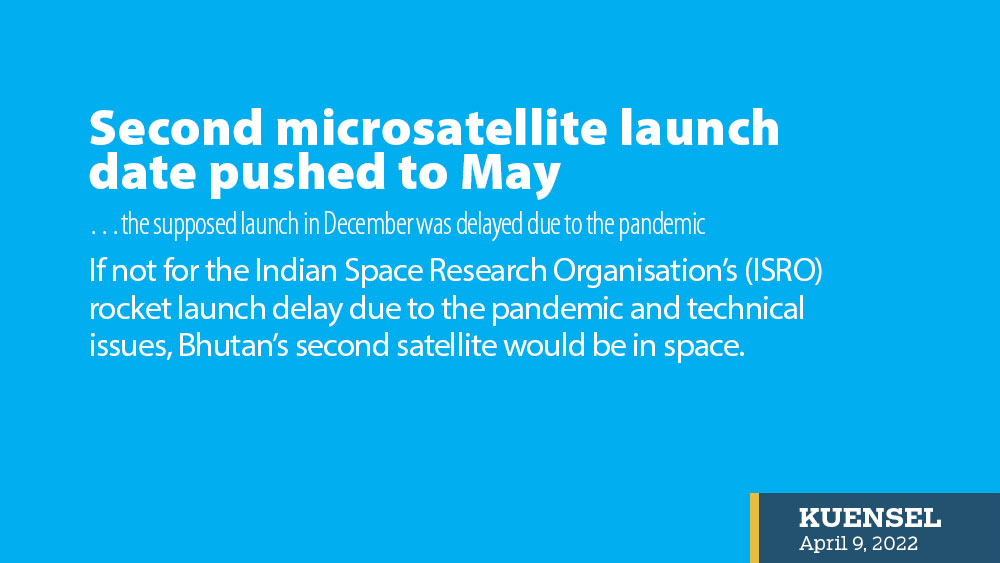…the supposed launch in December was delayed due to the pandemic
Phub Dem
If not for the Indian Space Research Organisation’s (ISRO) rocket launch delay due to the pandemic and technical issues, Bhutan’s second satellite would be in space.
After deorbiting Bhutan’s first satellite, BHUTAN-I, local space engineers began the second satellite project, a joint satellite initiative between the Department of Information Technology and Telecom (DITT) and ISRO last year.
The satellite was supposed to be launched by the end of last year.
Deputy executive engineer with DITT, Kiran Kumar Pradhan said that the Bhutanese depend on the ISRO’s launch schedule for the joint satellite launch.
The rocket’s readiness and the main satellite passenger for the rocket determine the launch. However, he said that due to the pandemic, there had been few backlogs for the rocket launch of ISRO. “The main satellite passenger for the rocket in which the joint satellite will be launched is currently experiencing a delay due to technical issues.”
As the joint satellite is a microsatellite, he said, they do not have a dedicated launch platform and are usually launched as a piggy-back passenger.
While the launch date is not finalised, the team expects the launch around the end of May or early June this year. “But that too is dependent on the readiness of the main satellite passenger,” he said.
After the prototype’s success last year, the team designed the engineering model in consultation with ISRO engineers. The fabrication of the engineering model card was carried out at the ISRO facility.
The team already fabricated, tested and handed over the flight model of the secondary payload to the ISRO team. “It will soon be integrated with the rest of the satellite components. The project is in its final stage.”
The Bhutanese engineers are building a secondary payload called text message repeating payload through the joint satellite programme. Using this facility, local scientists can relay instructions to the satellite.
Having completed the testing on the engineering model and flight mode card of the secondary payload, the team has returned to Bhutan from India.
He said that the team was currently testing the engineering model card with the DITT ground stations and working to established amateur radio ground stations in five colleges.
The team will return to India for the assembly, integration and testing of the satellite once the launch date is finalised.
As they wait for the launch date, the team says they are focusing on the joint satellite project and the earth stations necessary to communicate with the satellite.
The Ministry of Information and Communications (MoIC) and the ISRO signed Implementing Arrangement (IA) to develop a small satellite for Bhutan on September 24 jointly.
The agreement was in line with signing a Memorandum of Understanding between the two countries on collaboration in ‘Peaceful Uses of Outer Space’ in 2020.
The joint satellite of 30 cubic centimetres weighing about 15kg will take pictures of the earth and allow wireless communication. The satellite will move over Bhutan at least two times a day.


